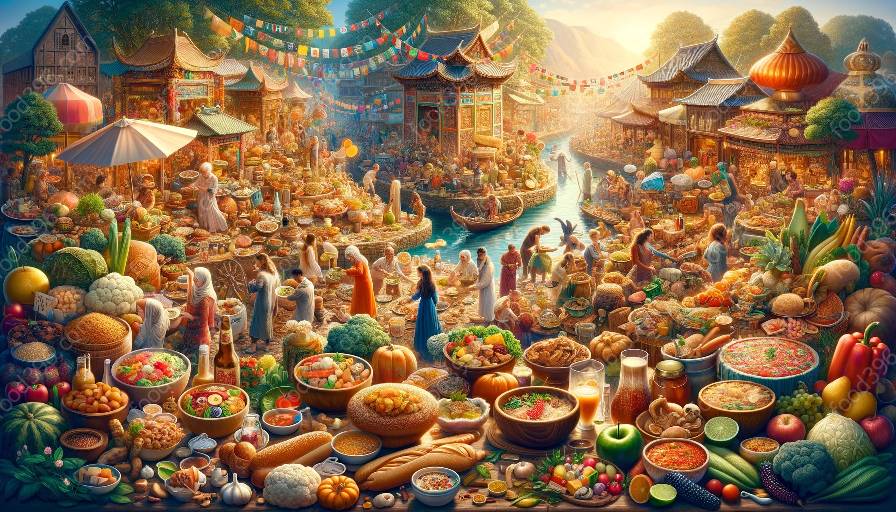Food holds a significant place in every culture, not only for its nourishment value but also for its symbolism. The practice of attaching meaning to food is deeply ingrained in various traditions and has a profound impact on the food culture and history of a society.
Understanding Food Symbolism
The concept of food symbolism revolves around the idea that certain foods are imbued with cultural, religious, or historical significance. These symbolic meanings are often passed down through generations and play a vital role in shaping the food traditions of a particular community.
Food Traditions and Symbolism
In many cultures, certain foods are associated with specific rituals, celebrations, or events. For example, in Chinese culture, the round shape of dumplings symbolizes wealth and prosperity, making them a popular dish during the Lunar New Year. Similarly, in Italy, the tradition of serving lentils on New Year's Eve symbolizes good luck and prosperity for the coming year.
The Symbolism of Colors and Ingredients
Food color and ingredients often carry symbolic meanings that are deeply rooted in cultural beliefs and traditions. In Indian cuisine, the color saffron is associated with purity and is used in various traditional dishes during religious ceremonies. Likewise, the use of specific ingredients, such as lotus root in Chinese cuisine, signifies abundance and prosperity.
Food Culture and History
The study of food symbolism provides valuable insights into the historical and cultural significance of certain ingredients, dishes, and culinary practices. It offers a window into the social, religious, and economic aspects of a society, shedding light on its values and beliefs.
Regional Variations in Food Symbolism
Food symbolism varies widely across regions, with each culture attributing unique meanings to different foods. For instance, in Japan, the act of presenting a bento box with carefully arranged food reflects aesthetic values and the importance of presentation. On the other hand, in Mexican culture, the significance of corn as a staple crop represents the connection to the land and the heritage of indigenous communities.
The Evolution of Food Symbolism
Food symbolism is not static; it evolves over time, reflecting changes in cultural practices, beliefs, and global influences. As societies undergo transformations, so do the meanings attached to certain foods, leading to the adaptation and reinterpretation of traditional food symbolism.
Conclusion
Exploring the cultural food symbolism provides a rich tapestry of insights into the ways in which food is used to convey meaning, express identity, and preserve traditions across diverse cultures. It serves as a bridge between the past and present, highlighting the intricate connections between food, culture, and history.

